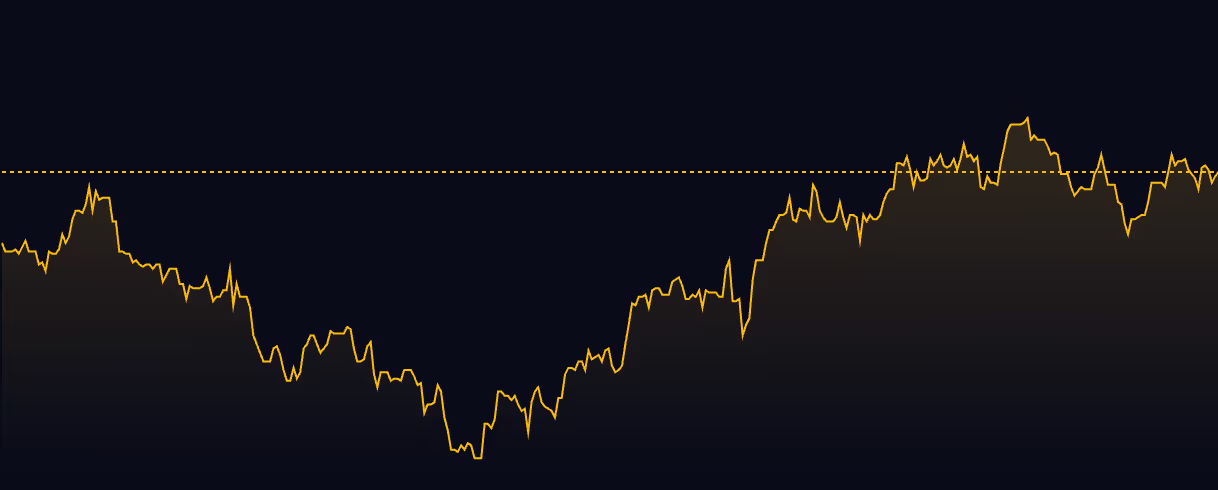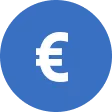When is the next US employment data published?
The next U.S. employment data release is scheduled for Friday, November 7, 2025, at 14:30 UTC. This will include key labor market data and the unemployment rate for October 2025.
The U.S. Bureau of Labor Statistics (BLS) releases "The Employment Situation" report monthly, typically on the first Friday following the reference month. The report typically includes data such as the unemployment rate, nonfarm payroll employment/ figures, employment growth, and employment trends for the previous month.
What is the US unemployment rate now?
As of April 2025, the U.S. rate of unemployment stands at 4.2% (unchanged from 4.2% in March).
This rate has been stable, fluctuating between 4.0% and 4.2% since May 2024, generally suggesting labor market stability.
Historical rate of unemployment in the United States
Below is a summary of the United States unemployment rates over the past five years, from January 2020 to March 2025. These figures are seasonally adjusted and sourced from the U.S. Bureau of Labor Statistics.
United States Civilian Unemployment Rate (2020–2025)
What was the United States' average unemployment rate in 2024?
In 2024, the average unemployment rate in 2024 was approximately 4.12% (rounded to two decimal places).
The monthly rates from the 12-month period each sat within a range of 3.7% to 4.2% (with the lowest unemployment rate experienced being 3.7%), indicating a period of relative labor market stability in the United States.
Is unemployment still high in the US?
As of March 2025, the current unemployment rate in the United States is 4.2%, reflecting a slight increase from 4.1% in February.
This rate is modestly higher than the 3.9% rate of unemployment recorded in March 2024 and the 3.5% rate of unemployment recorded in March 2023, indicating a 0.3 and 0.7 percentage point increase over the 12-month period and two-year period respectively.
While the current unemployment rate is above the lows seen in recent years, it remains within a range that many economists consider indicative of a stable labor market.
However, recent developments, such as the implementation of new trade tariffs and reductions in the federal workforce, have introduced economic uncertainties that could impact future employment trends.
Therefore, although there has been a slight uptick in unemployed persons, the rate of unemployment is not considered high by historical standards.
What time is US employment data released?
The U.S. Employment Situation report is released by the Bureau of Labor Statistics (BLS) at 08:30 ET on scheduled dates.
See below for the Bureau of Labor Statistics' scheduled releases for the Employment Situation report (including employment data and the unemployment rate) in 2025:
- Friday, 10 January 2025: December 2024 data
- Friday, 7 February 2025: January 2025 data
- Friday, 7 March 2025: February 2025 data
- Friday, 4 April 2025: March 2025 data
- Friday, 2 May 2025: April 2025 data
- Friday, 6 June 2025: May 2025 data
- Friday, 3 July 2025: June 2025 data
- Friday, 1 August 2025: July 2025 data
- Friday, 5 September 2025: August 2025 data
- Friday, 3 October 2025: September 2025 data
- Friday, 7 November 2025: October 2025 data
- Friday, 5 December 2025: November 2025 data
These dates are confirmed by the Bureau of Labor Statistics.
What is the current employment rate in the US?
As of April 2025, the Employment Situation Report detailed the following key employment trends and indicators:
- Employment-Population Ratio: Showed little change at 60.0% (compared to March's 59.9%).
The employment-population ratio represents the percentage of the civilian non-institutional population (people age 16+ who are not in the military or institutionalised) that is currently employed.
The ratio shows how much of the population is actually working, giving a broad sense of overall level of employment (not just those in the labor force).
- Labor Force Participation Rate: Showed little change at 62.6% (compared to March's 62.5%).
The labor force participation rate is the percentage of the civilian non-institutional population that is either working or actively looking for work (in other words, people who are in the labor force).
The rate gives a general sense of employment trends and tells us how engaged the population is with the job market. A falling rate might signal discouragement or retirement, while a rising one might reflect optimism and more people seeking jobs.
- Total Non-farm Payroll Employment: Increased by 177,000 in April (roughly in line with the average monthly gain of 152,000 over the prior 12 months).
The total non-farm payroll employment is the number of paid employees in the United States (excluding farm workers, private household employees, and nonprofit employees). However, it comes from employer surveys, rather than individuals.
Together, these figures indicate a stable labor market, with consistent employment growth and participation rates.
See more here: When is the next Non-Farm Payrolls report published?
Frequently asked questions (FAQs)
Where can I find US employment data?
You can access comprehensive U.S. employment data through the following authoritative sources:
- U.S. Bureau of Labor Statistics (BLS):
- Employment data: The BLS provides detailed statistics on employment, unemployment, wages, and labor market trends.
- Current Employment Statistics (CES): This program offers monthly data on nonfarm employment, hours, and earnings by industry.
- Current Population Survey (CPS): A monthly survey that provides data on the labor force status of the civilian non-institutional population, including employment and rate of unemployment figures.
- Employment data: The BLS provides detailed statistics on employment, unemployment, wages, and labor market trends.
- U.S. Census Bureau:
- Employment Topics: The Census Bureau collects data on the nation's workforce, including employment and unemployment levels, hours worked, occupations, and commuting patterns.
- Statistics of U.S. Businesses (SUSB): An annual series providing subnational economic data for U.S. businesses with paid employees, detailing the number of firms, employment, and payroll.
- Employment Topics: The Census Bureau collects data on the nation's workforce, including employment and unemployment levels, hours worked, occupations, and commuting patterns.
Is there a job shortage in America?
As of April 2025, the U.S. labor market exhibits a complex scenario:
- Unemployment Rate: Stands at 4.2%, unchanged from March, 2025.
- Job Openings: The latest JOLTS reported that the number of job openings has decreased to 7.2 million in March, down from February’s revised 7.5 million, indicating a softening in labor demand.
In summary, while the labor market does not currently exhibit a widespread job shortage, certain sectors may still experience tight labor conditions. However, the overall trend points toward a gradual balancing of labor supply and demand amid broader economic uncertainties.
What does the Employment Cost Index show?
The Employment Cost Index (ECI) measures changes in the cost of employee compensation (including wages, salaries, and benefits) over time.
Published quarterly by the U.S. Bureau of Labor Statistics, it offers a consistent and reliable view of labor cost trends across industries and occupations. The Employment Cost Index is closely watched by the Federal Reserve as an indicator of wage-driven inflation and labor market tightness. Unlike average earnings data, it controls for shifts in job types, making it a more accurate gauge of real compensation growth.
- If labor force participation increases (more people looking for work), it can ease pressure on employers to raise wages, potentially slowing ECI growth.
- Conversely, if there's a tight labor market (fewer available workers), employers may have to offer higher pay and better benefits to attract and retain talent, which pushes the ECI upward.
So, ECI reflects how competitive and tight the labor force is—the more competitive it gets, the more labor costs rise. The Federal Reserve uses this relationship to assess inflation risks and make decisions about interest rates.
Read more about the Fed's interest rate decisions here: When is the next Fed interest rate decision?
This publication is intended for general information purposes only and should not be construed as financial, legal, tax, or other professional advice from Equals Money PLC or its subsidiaries and affiliates.
It is recommended to seek advice from a financial advisor, expert, or other professional. We do not make any representations, warranties, or guarantees, whether expressed or implied, regarding the accuracy, or completeness of the content in the publication.




















